“I hope one day you will be able to update the story with the happy ending that many justice-seeking people around the world are still working for.”
— Gerardo Hernández
in a 2013 letter to the author
This is the Epilogue to What Lies Across the Water: The Real Story of the Cuban Five by Stephen Kimber. The Epilogue is included in the Spanish-language edition of the book, which was published in Cuba by Nuevo Milenio in Fall 2016 and won the Cuban Institute of the Book Reader’s Choice Award as one of the bestselling books of the year. The original English edition of the book is currently available as an ebook here, or you can purchase the print edition from the English publisher, Fernwood, or from Amazon.
Reviews here.
Oakland, California, December 5, 2014
Don’t go. The weekend’s clothes were packed, the hotel booked, the car rented for the 404-mile, six-hour, door-to-door drive to Victorville, a town on the southwestern edge of California’s Mojave Desert. Everything seemed in order. Two days earlier, Gerardo Hernández — inmate #58739-004 at USP Victorville, the federal maximum security penitentiary — called Alicia Jrapko to confirm he would be able to meet with them. All clear.
Don’t go.
In late November, the last time Alicia, the co-ordinator of the American branch of the International Committee for the Freedom of the Cuban 5, and her partner, social documentary photographer Bill Hackwell, had gone to see Gerardo in Victorville, they’d arrived, only to be told the prison was in lockdown. No visitors allowed. That was only the third time in more than 125 visits over the previous 12 years they’d been turned away. “In this business,” Bill allows, “that is not a bad record.” But “no visitors allowed” always hovered like a threat over their visits. Sometimes, an “incident” at the prison — a home away from home for many of American most violent drug and street gangs — would trigger a lockdown. Between 2005 and 2014, there had been at least eight violent deaths in Victorville. These were always followed by a lockdown. But sometimes, the institution’s refusal to allow inmate visits would seem arbitrary, intended simply to make an already lonely, difficult life more so for the institution’s more than 1,400 inmates, their families, and the friends who came to visit them.
Alicia and Bill had much to discuss with Gerardo this weekend. Their committee was organizing another, maintain-the-momentum event in Washington for February to press for the release of the remaining members of the Five[1], and planning the next — the fourth — “Five Days for the 5,” which was scheduled to take place, also in Washington, in September 2015.
As the international movement to win freedom for the Cuban Five had intensified over the previous five years, the focus shifted more and more to the American capital because that was where the decision to free them would almost certainly need to be made. That meant continuously lobbying a mostly indifferent Congress to put pressure on a largely uncaring administration to encourage a distracted president — it seemed there were always global crises (Afghanistan, Iraq, Iran, the Middle East, and, most recently, the Ukraine) more urgent for U.S. policymakers than Cuba — to finally invoke his presidential clemency powers to free the last three members of the Five.
That meant groups like the International Committee needed to be in Washington, as visible as possible and as regularly as possible.
During the last Five Days for the 5 in June 2014, the Committee had rallied more than 500 people — politicians, writers, lawyers, social activists, religious, labour, and community leaders — from more than 30 countries. Between rounds of lobbying, it had staged a two-day conference on the future of U.S.-Cuba relations, and even mounted a hip hop concert in honour of the Five, featuring the popular, politically engaged Dead Prez. The Five Days had culminated with a noisy Saturday march from the White House to the Department of Justice. Demonstrators carried placards proclaiming “16 Years Is Too Long,” and chanted “Libertad Para Los Cinco.”
Knowing what it took to organize such an event, the International Committee — whose American headquarters was on the other coast in Oakland, California, and whose volunteer organizers were spread across the country — had recently decided to lease space in Washington to use as a combination headquarters-dormitory for its work there in 2015.
In November, Cheryl LaBash, a Detroit-based member of the committee, had found a “perfect” two-storey townhouse for rent on the Internet. Built in the 1920s, it was located within “walking distance from [Washington’s] Union Station, which meant it was also close to the Capitol!” There were two bedrooms and a full bathroom upstairs, a typical main floor living space that could easily be transformed into work and meeting areas, as well as a finished basement with yet another half bathroom. Better, the townhouse also boasted a direct entrance — no stairs to navigate — from the adjacent parking lot into the basement, which would make it convenient for hauling banners, placards, signs, and boxes of printed material in and out. LaBash had officially taken possession December 1, but just online. On December 15, she planned to drive from Detroit to Washington in a car loaded down with supplies, banners, books, a printer, a sleeping bag and air mattress, meet the owner (ironically, a woman who worked at the State Department), and get the keys.[2]
Gerardo Hernández would want to hear all about that, of course, as well as details of the February event and the still evolving plans for September. Over the years, he had become increasingly active in the campaign to secure freedom for the Five. He jokingly referred to Alicia —who, along with Bill, had become close personal friends — as his “secretary.”[3]
Before leaving their house in Oakland today, Alicia and Bill made one last email check. That’s when they noticed the message from Adriana Pérez, Gerardo’s wife, who was in Havana. Whenever they visited Gerardo, Alicia would notify Adriana in advance in case she knew of any other planned visits — from Gerardo’s lawyer, for example, or the Interest Section in Washington — that might interfere with their plans. Adriana’s message this morning was brief. She had not heard from Gerardo — they usually spoke daily — and, although she didn’t know for certain what that meant, she worried Alicia and Bill would drive all the way to Victorville and not be allowed to visit him.
Don’t go.
Bill and Alicia quickly scanned the U.S. Bureau of Prisons website, which included a listing of all American federal inmates and the prisons where they were currently housed. According to the website, Gerardo had been moved on December 4 — yesterday — from USP Victorville to Federal Transfer Center Oklahoma City, a major stopover station for prisoners being moved from one federal jail to another.
What did it mean? “Our first thought,” Alicia recalls, “was that he was being transferred to a lower security prison.” Gerardo’s behaviour in prison had been exemplary. There was no need for him to be in maximum security. “We knew that that was a possibility but, because there’d been no sign a transfer was imminent, we were surprised.”
Could it signify something more? Was it possible Gerardo was about to be released and sent home to Cuba? That was always the hope, the dream, but it seemed even more unlikely. Among the Five, Gerardo’s case was the most complicated. He’d been convicted of conspiracy to commit murder; he was serving a double-life-plus-15-year sentence; and his lawyer’s “Hail Mary” legal appeal of his conviction was still mired deep in the American justice system. He seemed the least likely member of the Five to ever be the subject of presidential clemency. Unless… They looked more closely at the BOP site to determine whether the two others still imprisoned in the US — Ramon Labañino in Kentucky and Antonio Guerrero in Florida — had also been moved as well. They hadn’t.
Bill unpacked the rental car. “There was nothing else for us to do, except wait, and let our imaginations go wild,” Alicia recalled.
Five days later, Alicia’s cell phone screen came to life. “Unknown number” read the text on the phone’s screen. That message often popped up when Gerardo called from Victorville, but it wasn’t him. Instead, she heard a recorded voice explaining the call could not be completed because there were no funds in the inmate’s account. The message helpfully directed the listener to a webpage where she could top up his cash balance so he could use the phone. An hour later, Gerardo called.
“I’m not supposed to be making phone calls,” he told them, but a prison captain had been “helpful.” The reality was that he still knew little more than they did. He told them about the circumstances of his unexpected, unexplained transfer on December 4. He had been drinking coffee in his cell when the guards came to get him. “You’re leaving,” they said. “Don’t take anything with you.” Even the guards had seemed puzzled and eager to know what was happening to one of their best known inmates. But no one in the prison hierarchy would — or could — tell Gerardo anything. Not when he left Victorville, nor when he arrived in Oklahoma. “I don’t know where I’m going,” he told Alicia. “No one tells me anything.”
But he did tell them he’d been thrown in the “hole” immediately after arriving in Oklahoma. He would later joke that perhaps U.S. prison authorities were just reminding him of what the hole was really like in case “Kcho” had gotten any of the details wrong. (The internationally famous Cuban artist had recently created an art installation/reconstruction of the solitary cells in which the Five had originally been imprisoned in Miami after their arrests, as part of an exhibition at the National Museum of Fine Arts in Havana.) But the joke wasn’t funny. Gerardo had spent the past six days by himself, “counting the hours,” waiting to learn his fate, whatever it might be. And worrying.
He knew that Adriana, back in Havana, would be concerned about him, but he hadn’t been able to call her. Would they? Of course.
Oakland, California, December 12, 2014
The letter, written in pencil from his solitary cell in the Oklahoma prison, was in Gerardo’s own unmistakable block-print handwriting. It arrived two days after their brief telephone conversation. In it, Gerardo explained that someone inside the prison had told him that Oklahoma inmates were allowed to send letters without stamps on Wednesdays. So he had the taken the chance. And, miraculously, it had arrived; someone at the prison had carefully affixed the necessary postage.
Gerardo’s letter was both an emotional, personal thank you to Bill and Alicia for their 12 years of unwavering friendship and support, and also a farewell. Though he didn’t know where he was headed, or how long the uncertainty about that would last, he was convinced his time in California was at an end.
“What struck us,” Alicia would say later, “was, with all the drama and uncertainty for Gerardo, what he was most concerned about at that moment was getting a letter to us, thanking us of all those years when he was in the California penitentiaries.”
In their small two-bedroom home that serves as the International Committee’s American office, Alicia and Bill have filing cabinets filled with their correspondence with Gerardo, copies of many of the letters to and from his supporters from around the world, and many of the documents from his case. But this letter would be special. “The letter was very emotional for Bill and me,” Alicia says today. “We will save it as the last physical treasure in this difficult chapter of so many years of injustice.”
At that moment, however, they couldn’t know for certain whether this really would be the final chapter in the long story of the Cuban Five. Or just one more painful chapter in a seemingly never-ending horror book.
There had been hints, and clues, and tantalizing tidbits that — especially when read in retrospect — suggested the end might be in sight. But, after 16 years of frustration and disappointment, few, including Alicia and Bill — and even Gerardo — were willing to entertain the thought it might soon be over.
Victorville Prison, November 3, 2014
One month before his transfer, Gerardo Hernández had written a brief, upbeat letter to Walter Lippmann, the editor of Cuba News, a popular, progressive online aggregator of news and information about Cuba. “Today,” he noted with delight, “we woke up with the news about the editorial in the New York Times.”
Although the Times’ editorial’s starting point had been Cuba’s continued imprisonment of Alan Gross, this was not one more of those standard issue, State Department-parroting, mainstream American media, “Alan is a humanitarian do-gooder being held hostage by the dictatorial Cuban regime, which must release him unconditionally and immediately” pontifications.
For starters, this editorial — in the most influential newspaper in America — acknowledged that Alan Gross’s arrest “was the result of a reckless strategy in which [the United States Agency for International Development] has deployed private contractors to perform stealthy missions in a police state vehemently opposed to Washington’s pro-democracy crusade… Mr. Gross traveled to Havana five times in 2009, posing as a tourist, to smuggle communications equipment as part of an effort to provide more Cubans with Internet access…”
There were phrases — “police state,” “Washington’s pro-democracy crusade,” “provide Cubans with more Internet access” — that Gerardo would normally have disputed, but he also immediately grasped the seismic shift in thinking the Times editorial represented.
The editorial, in fact, was actually the fourth in a startling month-long series of Times’ editorials, each one arguing more determinedly for Washington to end to its 53-year embargo against Cuba and press the re-set button on relations between the longtime adversaries.
“At a time when a growing number of officials in Washington and Havana are eager to start normalizing relations,” the November 3 editorial noted, “Mr. Gross’s continued imprisonment has become the chief obstacle to a diplomatic breakthrough. There is only one plausible way to remove Mr. Gross from an already complicated equation.”
The editorial’s next sentence would be its most shocking — and unexpected. “The Obama administration should swap him for three convicted Cuban spies who have served more than 16 years in federal prison.”
The Times went on to explain exactly how — and why — the administration should act. “In order to swap prisoners, President Obama would need to commute the [Cuban] men’s sentences. Doing so would be justified considering the lengthy time they have served, the troubling questions about the fairness of their trial, and the potential diplomatic payoff in clearing the way toward a new bilateral relationship.”
The Times’ call for a prisoner swap, Gerardo marvelled in his note to Lippmann that day, was “something that a couple of months ago we could only be dreaming about.”
In a public sense, that dream had first seemed to assume what might be concrete shape almost a year before. On December 10, 2013, U.S. president Barack Obama and Cuban president Raúl Castro had shaken hands in a was-it-really-accidental? encounter at the funeral of Nelson Mandela.[4] The two presidents were among dozens of world leaders who had come to Soweto’s FNB Stadium to attend a memorial service to honour the legendary South African leader. Obama “bounded up” a set of stairs to the stage and began glad-handing his way through a line of world leaders toward the microphone when he came face to face with Castro. The two men shook hands briefly before continuing their greetings of other leaders.
America’s army of Cuba experts eagerly attempted to parse this momentary mingling of palm on palm. Ted Piconne, director of foreign policy at the Brookings Institution, told the London Telegraph: “it’s a nice symbolic gesture, but not particularly meaningful beyond that.” Julia Sweig, director for Latin America Studies at the U.S. Council on Foreign Relations, offered a more positive spin. “We might look back on this as another milestone,” she said, “a test balloon that both heads of state are throwing up to measure reaction from their publics.”
For their part, White House officials insisted the handshake was accidental, incidental, meaningless. “Nothing was planned in terms of the president’s role other than his remarks,” deputy national security adviser Ben Rhodes told American reporters who had traveled to South Africa with the president. “He really didn’t do more than exchange greetings… on his way to speak. It wasn’t a substantive discussion.”
While that may have been technically true, Rhodes himself understood the larger narrative significance of the gesture better than almost anyone. A former Obama speechwriter, he was at that moment the president’s personal emissary in top-secret talks with senior Cuban officials that had been underway for six months. The unspoken goal of the U.S.-initiated round of talks: to figure out a way to finally re-establish diplomatic and other relations after more than 50 years of failed American policy toward Cuba. Before that could happen, however, both sides understood they would need to resolve two longstanding sticking points. For the Cubans, it was the case of the Cuban Five; for the Americans, Alan Gross. Until those cases were resolved, they could make no real progress on finding common ground on the larger differences between them — from removing Cuba from the list of sponsors of state terrorism, to re-establishing diplomatic relations to ending the 53-year-old U.S. embargo against Cuba. At the time of the Mandela funeral, of course, those discussions were still top-secret — and their outcome was uncertain — so no one was prepared to speak openly about them, or even admit they were happening.
But, even without knowing about the talks themselves, some observers on both sides of the Straits of Florida had begun to sniff new and hopeful signs of a possible rapprochement in the tropical breezes.
The month before the handshake seen round the world, for example, Obama had told a political fundraiser in Florida — of all places — that the United States had to be more “creative, and we have to be thoughtful, and we have to continue to update our policies” on Cuba.
In the fall of 2014, the administration pointedly thanked Cuba for its role in sending doctors to Africa to combat the Ebola outbreak. Samantha Power, the U.S. ambassador to the United Nations, who had just returned from her own fact-finding mission to Liberia, told a panel discussion in New York: “I have to commend Cuba for sending 265 medical professionals early.” Power, a confidante of President Obama, went on to mention Cuba favourably three more times during her talk. That prompted Sir Harold Evans, editor at large for Thomson Reuters, which sponsored the panel, to ask what this might mean for relations between the U.S. and Cuba. “There’s no integrated effort,” Power allowed, “but we’re very grateful to them for doing this.”
And there were other, clearly unrelated but nonetheless significant — and positive —developments. In February 2014, Fernando González was released from prison. It was not a humanitarian gesture. The second member of the Cuban Five to be freed had served every hour of his sentence before being released, then immediately re-arrested under American immigration law and summarily deported back to Cuba. He’d even — one last indignity — been shackled by U.S. marshalls until after his plane finally touched down in Havana.
That said, Fernando’s return — along with the earlier release of René González, who’d also served his full sentence — added two more powerful voices to a growing international chorus for the freedom of the remaining three. By June, Fernando had been appointed vice president of ICAP, the Cuban “friendship-with-the-peoples” organization that helped support and encourage the network of international solidarity groups.
Fernando’s return had another unintended, but not insignificant impact on hopes for a solution. It reduced by one more the number of Cuban prisoners the U.S. would ultimately need to agree to swap in any prisoner exchange.
Meanwhile, in April 2014, a despondent Alan Gross — by then in the third year of his own 15-year sentence — went on a brief hunger strike. He was protesting the disclosure of yet another USAID-funded regime-change project called ZunZuneo — a secretive Cuban Twitter scheme aimed at stirring unrest among Cubans — that had continued even after Gross was arrested and imprisoned. Furious, Gross informed his lawyers and his family he would not celebrate his next birthday in a Cuban prison. The clear implication was that he would rather commit suicide. That ratcheted up pressure on the Obama administration to do whatever was necessary to win his release and, at the same time, reminded Cuban authorities just how vulnerable their best bargaining chip was.
In June, the White House appointed career diplomat Jeffrey DeLaurentis as the new chief of its U.S. Interest Section in Havana. According to his official biography, DeLaurentis had most recently been the U.S. representative for “special political matters,” and, before that, assistant deputy secretary at the State Department’s bureau for western hemisphere affairs. During the early 1990s, he’d even served as head of the political and economic affairs office at the US Interests Section in Havana.
But it was what was not in the official news release that intrigued Gerardo Hernández. “Look him up in Kimber’s book,” he urged Alicia Jrapko. It turned out DeLaurentis had been one of the three key White House Officials officials who met with Gabriel Garcia Marquez, the Nobel-prize-winning Colombian novelist, in May 1998. Garcia Marquez had brought a secret message from Fidel Castro: Miami-based exile terrorists were plotting to attack airplanes carrying tourists to Cuba. That discussion led to an unprecedented meeting in Havana in June 1998 between FBI agents and Cuban State Security. The Cubans believed the FBI agents had agreed to investigate and report back to them. Instead, three months later, the FBI, instead of arresting the plotters, arrested the Five. If anyone in the American administration would understand the case of the Cuban Five, it would be DeLaurentis. Why would the White House appoint him now as the head of its Interest Section in Havana unless…?
During the Five Days for the 5, which took place the same month as DeLaurentis’s appointment, the committee was surprised when State Department officials agreed to meet with them. Previous requests for such a meeting had been ignored. But this time, senior officials, including Raymond McGrath, the State Department’s coordinator for Cuban affairs, and Alex Lee, the deputy assistant secretary for South America and Cuba, met twice with representatives of the group. While there was no “meeting of the minds” at either session, it was clear the officials were at least curious to better understand the growing international movement to free the Five.
Many developments, however, were harder to read. Positive? Negative? On the eve of the Committee’s two-day conference on changing American-Cuban relations, for example, the White House trumpeted the release of an American soldier held captive in Afghanistan. Sgt. Bowe Bergdahl had been freed in exchange for five Taliban prisoners from the Guantánamo naval base. On the one hand, the Obama administration had completed a prisoner swap in order to get one of its own back. Why not strike a similar deal for Alan Gross? On the other hand, allegations the soldier had been a deserter ignited a firestorm of protest in Congress and beyond. Would the administration contemplate another swap — albeit a very different kind of exchange — after enduring the political fallout from Bergdahl?
Set against that crazy-quilt backdrop of hard-to-parse developments, Gerardo Hernández’s sudden, unexpected, unexplained transfer from Victorville to Oklahoma on December 4 might be a positive sign. Or it might not.
“We could be living in some historic moment in terms of US-Cuba relations,” Gerardo himself concluded hopefully — and presciently, as it turned out — in his message to Lippmann, adding even more hopefully, that “the time won’t be good for the Ileanas [Ros-Lehtinen], the Bobs [Menendez], and all the gang that for many years has profited from being hatred advocates.”
Even Gerardo still didn’t know the half of it.
But he knew something almost no one else did. Adriana was pregnant. He was going to be a father!
Victorville Prison, May 7, 2014
Gerardo and Adriana had been talking seriously about having children since they said their “I-do’s” in 1988. By 1991, Adriana had even assembled an almost complete layette. At first, they decided to wait until after Gerardo completed his tour of duty in Angola in 1990, then until after Adriana finished her chemical engineering degree. By then, of course, there was Gerardo’s job. Beginning in 1994, he would spend much of each year away from Cuba, ostensibly working at the embassy in Argentina but really heading up Cuba’s “Wasp” intelligence network in Miami. During his last vacation home before his arrest in 1998, Gerardo and Adriana had discussed again — and more urgently — their mutual desire to start a family. Gerardo had even written a long memo to his bosses in Havana, asking for permission for Adriana to join him in the United States.
Instead, he was arrested, tried, convicted, and sentenced to a double-life-plus-15-year sentence in America with no hope of ever returning home to Cuba. The U.S. government pointedly refused to grant Adriana a visa, even to visit her husband in prison.
Despite the passing years, Adriana refused to abandon their parenting dream. In February 2013, she turned up, unannounced, at the Havana hotel where Vermont Democratic Senator Patrick Leahy and his wife, Marcelle Pomerleau, a registered nurse, were staying. Adriana had previously met Leahy, an opponent of U.S.-Cuba policy, and he had helped facilitate a secret, visa-less, non-conjugal visit with Gerardo. Now Adriana made a personal appeal to the couple — as parents and grandparents — to help her find a way to conceive a baby with her husband. She was 43, and time was running out.
“It was an emotional meeting,” Gerardo would explain later. “There were tears.” Because Adriana’s phone calls with her husband in prison were monitored, however she only spoke of it vaguely to him. “Remember that thing we used to talk about,” she would say. “Well, things are moving.”
Gerardo tried not to get too “enchanted” with the possibility, but, “little by little, through the phone, she told me it was going to happen.”
Although federal inmates are not allowed conjugal visits, prison officials — at Leahy’s urging — discovered a precedent in which an inmate had been allowed to conceive through artificial insemination.
In early May 2014, Gerardo learned that Adriana’s pregnancy had been confirmed.
On the evening of May 7, after spending most of his day enduring yet another prison lockdown, Gerardo wrote to Nancy Kohn, a Boston-based member of the International Committee with whom he’d carried on a long, largely apolitical correspondence about their shared love for baseball. “It’s been an extraordinary day,” he wrote, clearly giddy with excitement. “I received good news — actually one of the best news of my life, or even the best one so far… (sorry, not related to our return to Cuba)… I hope I’ll be able to share with our friends in a while, and you sure will be among the first ones [to know]. The only thing I can tell you now is that it’s big” — he traced over the word several times to make it appear bold — “reason enough for friends like you to work with even more desire and enthusiasm to get the three of us to Cuba soon as possible… Sorry for the intrigue!”
As excited as he was at the news he would be a father — Adriana was due in early January 2015 — Gerardo admits today he had “mixed feelings.” He worried the American government’s “accommodation” that allowed them to finally have a baby was also its way of confirming “I would be in prison in America forever.”
Marianna Federal Correctional Institution, Marianna, Florida, December 15, 2014
Antonio Guerrero was asleep in his cell when a guard woke him at 5:30 a.m. “Get down, Guerrero, you have to pack. At 6:30 a.m., you have to be in the concourse, you understand? You want me to say it in Spanish.”
Antonio Guerrero understood — or hoped he did. He’d read the New York Times editorial and even bet a Coke with his “celly” — who was due to be released January 20 — that he’d be back in Cuba before his cellmate was freed. This morning, he called out to him: “I told you I was going home before you.”
The eternally optimistic Tony assumed something “big” must be happening. He hadn’t asked for a transfer, and this transfer seemed very different than any he’d been involved in previously. When he arrived at the airport, he was greeted by an “incredibly friendly” officer who went inside the hangar and returned with news Tony would be traveling aboard a “luxurious VIP plane.”
“I was excited,” Tony says now. “I was thinking, ‘I’ll remember this trip all my life.’”
But he wasn’t, as he hoped, on his way home to Cuba. Instead, the plane flew north from Florida to North Carolina and, by 3 p.m., Tony was being processed at the Butner Medical Center, part of the Butner Federal Correctional Complex near Raleigh, N.C., where Bernie Madoff, the infamous Ponzi scheme perpetrator, was an inmate. What was he doing here, Tony wondered? No one seemed to have any idea, although one of the guards mentioned there was a unit in the medical center for prisoner-workers, so he would probably be assigned to that unit soon. Was he really going to be staying at Butner?
That night he was placed in the Center’s special housing unit — solitary confinement — and told to sleep well. “We’re coming to get you at 7 a.m.”
What was going on?
Butner Medical Centre, North Carolina, December 16, 2014, 3 a.m.
Ramon Labañino hadn’t been able to sleep. “I began to think I was in Cuba and I was waiting to see if I would spot the other guys pass by.” He knew he wasn’t really in Cuba — he was in some prison called Butner — but he was certain Gerardo and Tony must be close by. The day before, as he’d waited for his own un-requested, unprepared-for transfer from the Federal Correctional Institution in Ashland, Kentucky, to Butner, he’d overheard two guards. “This is a strange business,” one said. “We have to get him out of here and to the nearest airport right away.”
At Butner, he’d been whisked through processing without the usual bureaucracy. “Hurry up,” one guard told another, “because the other one’s coming behind.” The other one?
Alone in his cell that night, Ramon couldn’t sleep. Instead, he exercised, paced the millimeters of his small, solitary cell. And waited.
Havana, Cuba, December 16, 2014, 7:30 a.m.
As she had done every morning since returning earlier that month from visiting her husband in Ashland, Elizabeth Palmeiro checked the U.S. Bureau of Prisons inmate locator web page. Ramon had said he had a feeling “something” was going to happen soon, and he urged her to “get ready for our freedom.”
In truth, Elizabeth had been preparing for her husband’s release from prison since at least 2005, when she’d first bought him new underwear and pants… just in case. In 2010, she bought more underwear, and an electric shaver. In case.
Despite that, she tried never to allow herself to become too optimistic just so she wouldn’t be too disappointed when nothing happened. Again.
By checking the BOP site each day, she already knew Gerardo had been transferred to Oklahoma. But there’d been no change in the status of Ramon or Antonio.
But this morning, she saw Ramon had been transferred as well — to some place called Butner, North Carolina!
She checked to see if Gerardo was still in Okla—. Butner too!
And Tony? He was there also.
This time, it was really happening.
Butner Medical Center, 7.a.m.
Better than their word, the guards arrived for Tony just before 7 a.m. Once outside the cell, they removed his cuffs, then began rushing him along the passageways at “supersonic speed,” the guards running in step beside him until they reached the unit’s visitors’ room.
“That’s when I saw a person shaking Gerardo’s hand!” Tony remembers, the wonder still obvious in his voice. “There were quite a few people there, but I couldn’t contain myself and said to him, ‘Gerar!’”
And then… Ramon!
For the first time in almost exactly 13 years, Gerardo Hernández, Ramon Labañino, and Tony Guerrero were together again in one place. Embracing. By 8 a.m., they were wading through the piles of official papers, each signing off on a formal presidential clemency document that would set them free.
“WHEREAS it has been made to appear that the ends of justice, foreign policy considerations, and the national security of the United States requires that the aforesaid sentence not be served in its entirety;
NOW, THEREFORE, BE IT KNOWN that I, BARACK OBAMA, President of the United States of America, pursuant to my powers under Article II, Section 2, clause 1, of the Constitution, and in consideration of the premises, divers other good and sufficient reasons me thereunto moving, do hereby commute the aforesaid total prison sentence of the said GERARDO HERNANDEZ to expire on December 17, 2014, commuting also the term of supervised release in its entirety and remitting any unpaid balance of the special assessment…”
For Tony, however, the most important document was the one that explained they would be landing together in Havana, Cuba at 8 a.m. EST December 17.
In 24 hours, they would finally be reunited with wives, mothers, sons, daughters — and, of course, with their two brothers, René and Fernando.
Incredibly — but perhaps not surprisingly — they were forced to spend their final night in custody in separate, solitary cells. At 2 a.m., the guards came to wake them for the drive to the airport. “It was OK,” Tony says now. “We hadn’t been sleeping anyway.
Back Story, June 2013 – December 2014
The negotiations to free the three remaining members of the Cuban Five and end 55 years of failed American foreign policy had officially begun 18 months before, in Ottawa, Canada.
Barack Obama’s presidency had begun four-and-a-half years before that with modest hope for improvements in U.S.-Cuba relations. But even those modest hopes had been quickly dashed. After Alan Gross was arrested in December 2009, the Obama administration almost instantly lost interest in virtually any public or private discussion with the Cuban government that didn’t begin and end with Gross’s immediate, unconditional release. While the Cuban government said it would be willing to discuss Gross’s case on a “humanitarian” basis, it coupled that with its own insistence the fate of the Cuban Five be part of any discussion. The Americans refused. And that was that.
As my friend Alex Trelles predicted so succinctly back in 2009: “Nothing will change between Cuba and the United States until they resolve the issue of the Five.”
But that stalemate could not be broken until after Obama had been re-elected to his second term as president in November 2012. Frustrated by an increasingly obstructionist Congress at the same time he was suddenly freed from the need to seek re-election, Obama began his second term looking for “game-changing” initiatives he could launch without reference to Congress.
In early 2013, he called together his top aides for a series of meetings, asking them — in the words of an Associated Press report — “to ‘think big’ about a second-term agenda, including the possibilities of new starts with longstanding foes such as Iran and Cuba.” A month later, during Obama’s first meeting with his newly appointed secretary of state, John Kerry, he and Kerry “discussed Gross’s ongoing incarceration in Cuba and their broader dissatisfaction with America’s policy toward the island. Kerry quickly enlisted the assistance of the Vatican, one of the few institutions in the world broadly respected in the U.S. and Cuba” to act as a go-between.
Once Cuba agreed to talk — Cuba, in fact, had been calling for such “no-pre-condition” discussions for years — the U.S. administration asked the Canadian government to facilitate a series of meetings. Over the course of the next 18 months, senior negotiators for the two sides met on seven different occasions in Ottawa and Toronto, and at least twice more at the Vatican, including one meeting in the fall of 2014 during which the two sides confirmed the details of the prisoner swap.
Those negotiations had been especially complicated and convoluted. The Americans had long since boxed themselves into a corner, refusing to publicly acknowledge Alan Gross’s role in its regime-change programs and insisting they would never trade “humanitarian do-gooder” Gross for Cuban “spies.”
So, in the end, the official story had to become that Washington was sending the three remaining members of the Five home to Cuba in exchange, not for Gross, but for a man few Americans, or Cubans, had heard of prior to December 17.
Rolando Sarraff Trujillo, who once worked in the cryptology section of Cuba’s Directorate of Intelligence, had been arrested in 1995 and charged with espionage for allegedly selling state secrets to American intelligence. He was eventually convicted and sentenced to 25 years in prison.
Although the U.S. had neither acknowledged Sarraff as one of its agents nor made any effort to win his release until it needed a plausible public relations cover for the deal it now wanted to make with Havana, President Obama would do his best to spin Sarraff into the role of centrepiece of the prisoner exchange.
“Alan,” he would insist in a televised address to the American people on December 17, “was released by the Cuban government on humanitarian grounds. Separately, in exchange for the three Cuban agents, Cuba today released one of the most important intelligence agents that the United States has ever had in Cuba…” Cuban President Raúl Castro played along. “For humanitarian reasons,” he explained in his own simultaneous televised statement to the Cuban people, “today we have also sent the American citizen Alan Gross back to his country.”
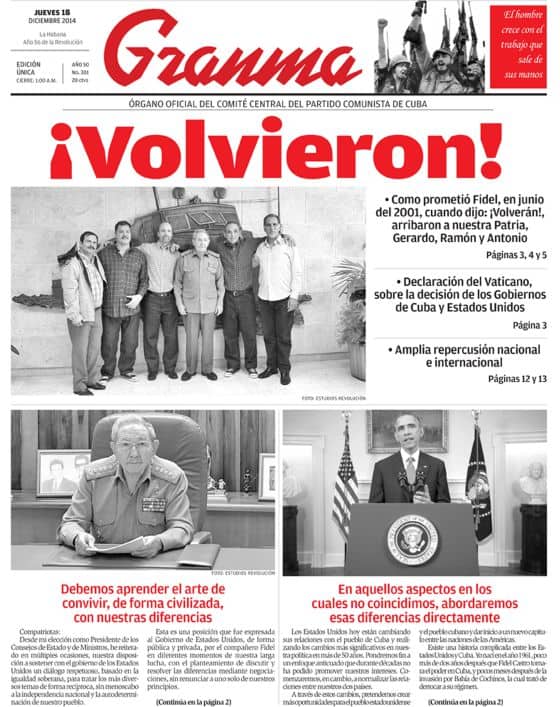
And there was more — much more — to the official presidential pronouncements in Washington and Havana that day.
Belatedly acknowledging the 55-year failure of America’s attempts at regime change in Cuba, President Obama declared: “We will end an outdated approach that, for decades, has failed to advance our interests, and instead we will begin to normalize relations between our two countries. Through these changes, we intend to create more opportunities for the American and Cuban people, and begin a new chapter among the nations of the Americas.”
No matter how Obama glossed the changes, however, the reality was that — after more than five decades of embargos, economic sanctions, invasions, terrorist attacks, airplane bombings, assassination attempts, and regime change schemes — Cuba had won. The Cubans had refused to abandon their revolution, had refused to knuckle under to the most powerful country on earth. And they had won.
Not that Cuban President Raúl Castro was gloating. Or getting too far ahead of reality. “We have agreed also to renew diplomatic relations,” he told the Cuban people in his speech. “This in no way means that the heart of the matter has been solved. The [U.S.] economic, commercial, and financial blockade, which causes enormous human and economic damages to our country, must cease.” Still, he was hopeful. “While acknowledging our profound differences, particularly on issues related to national sovereignty, democracy, human rights and foreign policy, I reaffirm our willingness to dialogue [with the United States]on all these issues… The progress made in our [prisoner] exchanges proves that it is possible to find solutions to many problems.”
No one could know at that moment, of course, where all this talk about normalizing relations would ultimately lead, but one thing was clear. None of it could have happened without the return of the last of the Cuban Five to their homeland.
The next day’s headline in Granma read simply: “Volvieron!” They have returned.
Havana, Cuba. January 6, 2014, 8:30 a.m.
On Tuesday, January 6, 2014, at 8:30 a.m., — almost three weeks to the day and hour after Gerardo finally returned home to Cuba — Gema Hernández Pérez, a healthy, seven-pound, seven-ounce girl, was born in Havana. Her proud parents: Gerardo Hernández Nordelo, 49, and Adriana Pérez O’Connor, 44.
Declared Gerardo Hernández: “I never imagined such a happiness.”
The “happy ending” to the story of the Cuban Five had turned out to be far more happy than even Gerardo had dared to imagine.
****
[1] Fernando González had been released in February 2014 after serving his full sentence. In May 2013, René González, who was on parole and a compassionate visit to Cuba, was given permission to serve out the rest of his parole in Cuba provided he give up his U.S. citizenship. He did.
[2] On December 15, as planned, LaBash drove eight hours from her home in Detroit to Washington with a car full of “Free the 5” materials. “I got the keys, spent the night at our new house and, on December 16, drove back to Detroit to prepare to bring another carload. On the morning of the 17th, I watched Gerardo, Ramon and Tony walk down the stairway from the plane.” The members of the International Committee decided to keep the house, and begin work on other unfinished Cuba business, including ending the blockade against Cuba.
[3] In October 2014, Alicia and Bill were awarded the Friendship Medal of the Republic of Cuba for their years of work on behalf of the Five.
[4] Cuba played such a key role in South Africa’s struggle for liberation from apartheid that Mandela had made a special thank-you visit to Havana in 1991 shortly after he was released from prison.
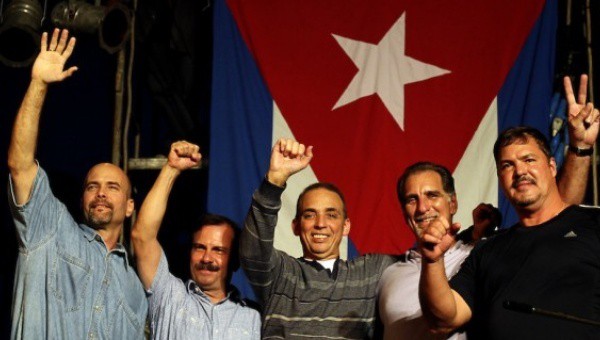
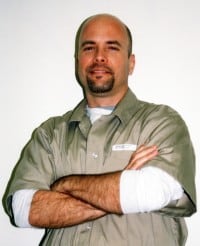
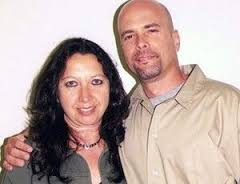
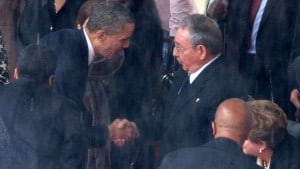
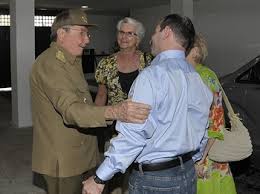
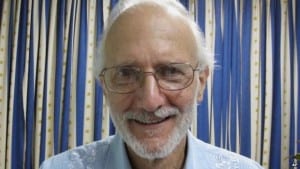
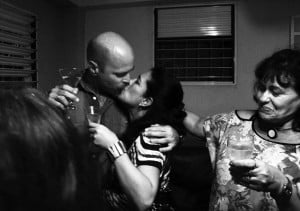
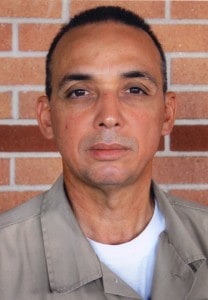
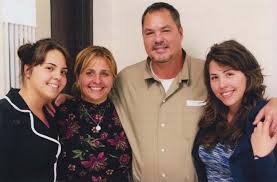
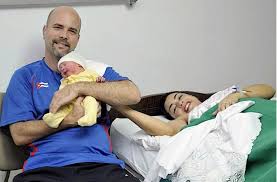



 STEPHEN KIMBER, a Professor of Journalism at the University of King's College in Halifax and co-founder of its MFA in Creative Nonfiction Program, is an award-winning writer, editor and broadcaster. He is the author of two novels and eight non-fiction books. Buy his books
STEPHEN KIMBER, a Professor of Journalism at the University of King's College in Halifax and co-founder of its MFA in Creative Nonfiction Program, is an award-winning writer, editor and broadcaster. He is the author of two novels and eight non-fiction books. Buy his books
Wonderful! Thank you for such a riveting read, Stephen. So many important details added.
In 2002 we started the Irish campaign to Free the “Miami” Five. We never thought it would take 13 years to see them freed. For us in Ireland, by comparison with the wrongly convicted Guilford Four and Birmingham Six, the Miami Five was an open-and-shut case. In Guilford and Birmingham there was direct forensic evidence and signed confessions of guilt (all fabricated or forced, but accepted into evidence none the less). All of that had to be overturned, a prospect described as “a terrible vista” and one too terrible to believe, by the first public enquiry. There were also dead civilians, the innocent victims of terrorist bombs placed in public bars and the backdrop of an on-going terrorist insurgency.
By comparison, the Miami Five case looked easy. There wasn’t a shred of evidence, absolute denials of guilt at all times (in spite of torture) and a laughable judicial “process” more appropriate to a tin-pot dictatorship. We gave it months, not years, to collapse. What we hadn’t realised was how politically rigged the US criminal justice system was. How naïve we were.
Of course, since then we have come to realise that its not just the criminal justice system of the United States that is unfit for purpose. The entire claim to constitutional democracy is demonstrably bogus as Edward Snowden, et al, have since shown. Fixing that may well be the next challenge for Cuban diplomacy.
Hi Stephen,
Thanks for once again writing such a complete and marvelous account. I’ve been promoting your book on Cuba Inside Out and in all talks about Cuba since it came out and hope you will be coming to California Bay Area some time so we can meet, talk and I can promote whatever talks you will be giving.
Abrazos,
Karen
Congratulations Stephen! I so appreciated Canadian Keith Bolender’s writings and then What Lies Across the Waters to provide well documented research in an intriguing and eminently readable style to many more people besides stalwart Cuba supporters and Free the Five activists. Keeping the many players straight and the chronology in order often posed a significant challenge especially when much of the public knew nothing about the Five, but you brought us up to speed and made spreading the word a much easier sell. The Five and their families are the heroes, that’s for sure, but the leaders of the International and National movements and the authors and everyday activists who just wouldn’t give it up all helped to bring about this truly Happy Ending. Viva Cuba!